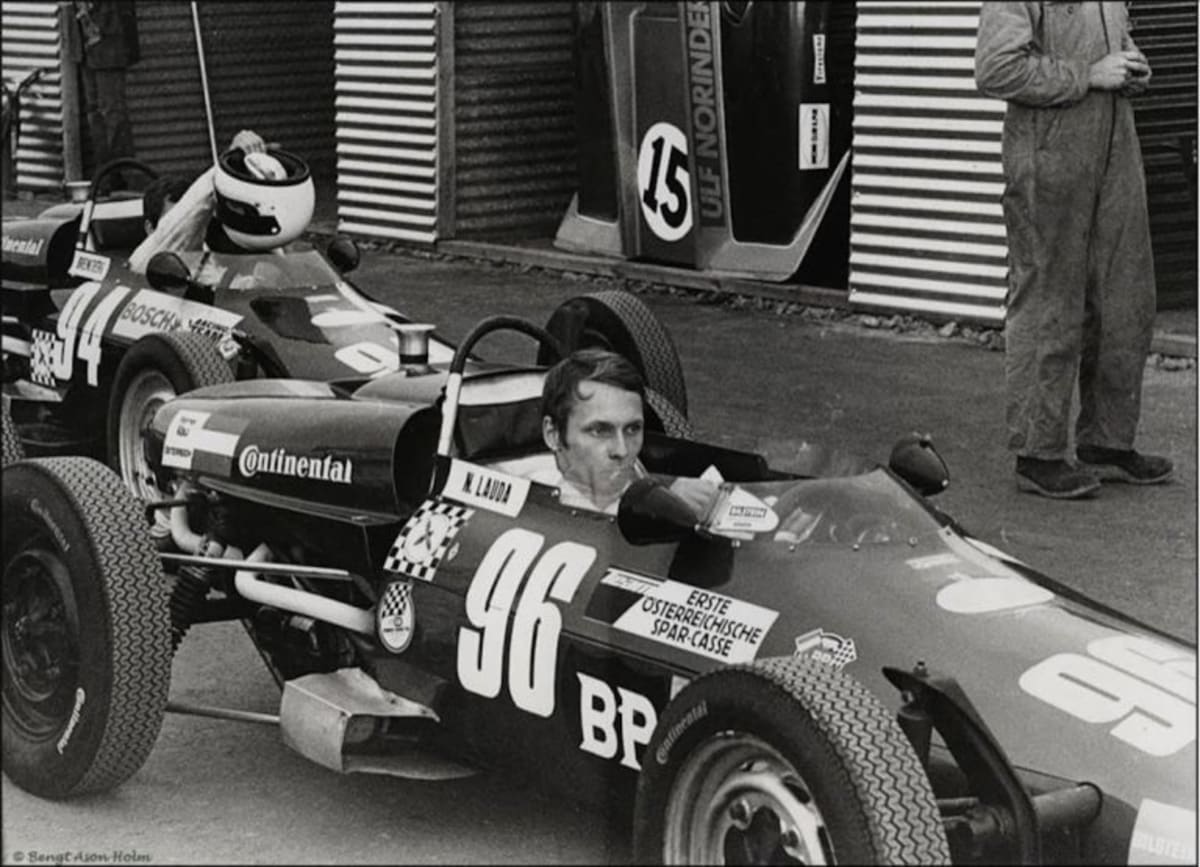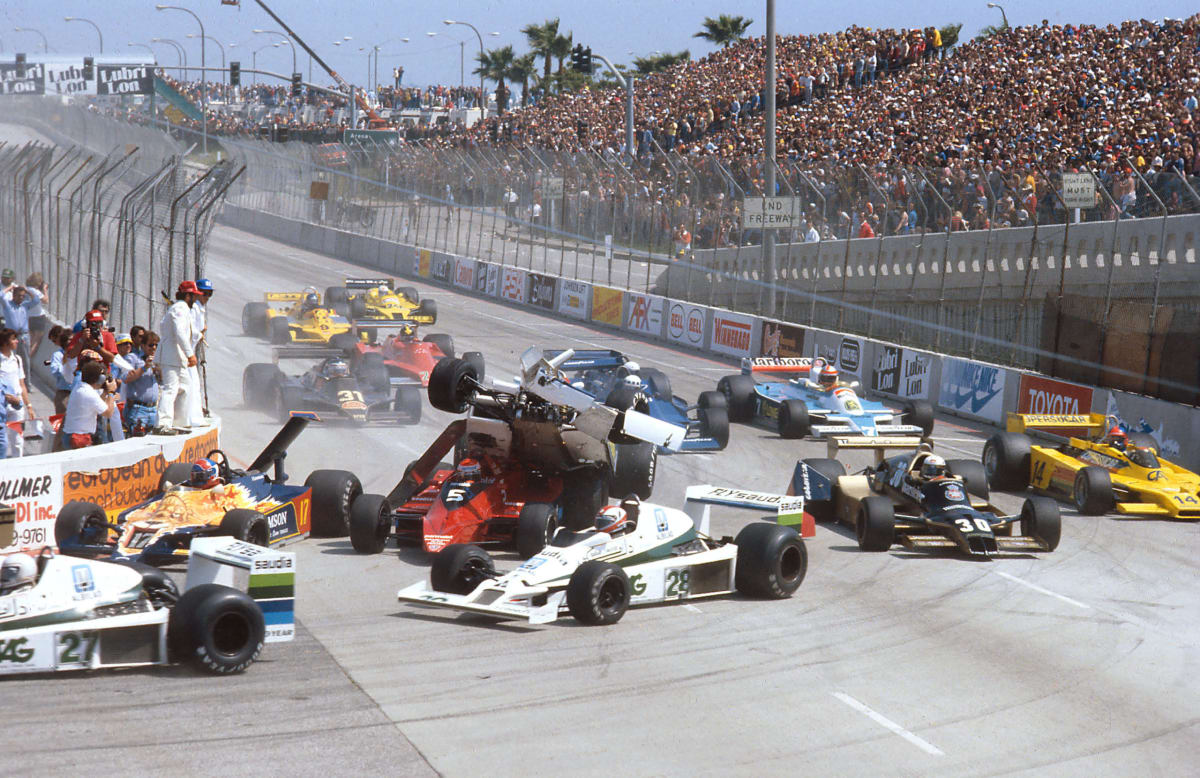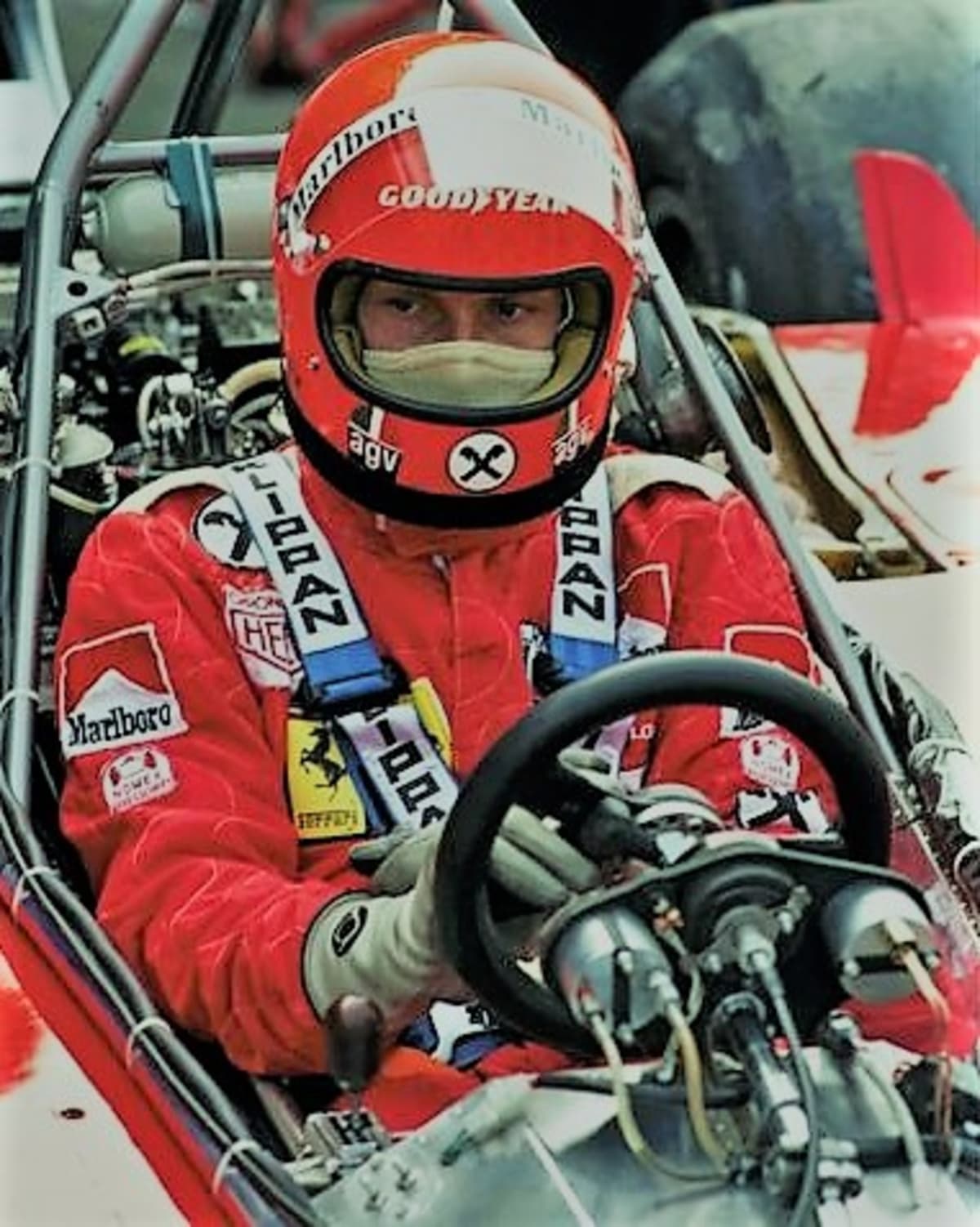NIKI LAUDA HIS COMPETITION HISTORY
Published on Sun, Mar 15, 2020
By: Doug Stokes
All sports fans love, NO … live by numbers: days, dates, scores, top speed, laps, and so on … you know, the hard facts and exact figures that make up the fabric of competition.
LA CAR BOOK REVIEW:
NIKI LAUDA HIS COMPETITION HISTORY
By Jon Saltinstall
Forward by John Watson
Preface by Doug Nye
Afterword by Kurt Bergman
ERVO Publishing
Westrow House, Holwell, Sherborne, Dorset, UK
Publication: November 2019
USA: $85.00, CAN: $95.00 UK: £60.00
ISBN: 978-1-910505-46-5
Format: 280 x 235mm, hardback
Pages: 376
500 photos, mainly color
Photos courtesy ERVO Publishing
Here, one of the arguably greatest ever Formula One racing drivers has his every race logged and annotated from his more than remarkable, 18-year career that saw a motorsports comeback like no other ever.
This is the race record of Niki Lauda, who bootstrapped his way into racing by taking out a very large bank loan against his winnings, and who won three Formula One World Championships and the admiration of everyone in motorsport when he came back from a horrendous, flaming, near-fatal accident at the German Grand Prix in August of 1976 to claim victory in the South African Grand Prix in March of 1977, eight short months from his receiving Christian last rights in hospital in Mannheim.
And this race record is of every competition event that the Austrian ever took part in … from his first at a hillclimb event in Bad Muhllacken in a friend’s hastily-rebuilt Mini Cooper (which Lauda had wrecked in an early attempt at race driving) to his 316th and last race in November of 1985 at the Australian Grand Prix.
Author Saltinstal, treats each race as a separate and unique event, setting the stage, recalling the race, and leading the reader to the next with great skill. If three hundred race reports in a row seems like a lot, it is. But the writing is always interesting and the author’s selection of some 500 excellent photos from the day augments and colors each report with razor sharpness.
The changes in the racing cars themselves over the years and Lauda’s influence on the designs are noted in a number of summaries that accompany significant race reports as are the racing circuits themselves.

Lauda raced thorough the Turbo era (where wildly turbo-charged engines made virtually no power off-throttle and 900 horsepower almost the instant that the accelerator pedal was pushed) and the high downforce era (where there was so much aerodynamic help that F1 cars were said to be able to drive across the ceiling given a proper run at it). Lauda was the master of machine he was in and always working to get the very maximum out of whatever he was driving.
Along the way in the 18-year span of this book many changes in both track design, the usage of new tracks, and the phasing out of others are all noted as well. And, as if 300 plus race report and 500 great photos were not enough, Saltinstall adds a trio of appendices that cover the thirty-three races where Lauda was entered and otherwise set to compete in and did not for myriad reasons, along with twenty-eight events, tests, and demonstration runs (in everything from Karts to F1 cars) that ranged from July of 1986 to May of 2018.

Not one of his greatest races … 1979 Long Beach Grand Prix, California – April 8, 1979. Patrick Tambay (McLaren M28 Ford) flies over the back of Lauda’s ( #5) Brabham BT48 Ford at the Hairpin on lap 1.
The third link the chain is an event-by-event retelling entitled “Rumors and Possibilities” that lists a number races and events that never saw the light of day, such as the possibility of Lauda racing in the Indy 500, the 24 Hours Le Mans, and in the Can-Am Series for Paul Newman’s team. (All three citings adding a touch of color and speculation to the Lauda story.)
And, speaking of stories, Lauda himself is the author of a number of books (all of which are here recommended) among them: “The Art and Science of Grand Prix Driving” in 1977. “The New F1 Turbo Age” in 1984, and, his very personal: “To Hell and Back” in 1986. It might be a just bit repetitious here to say that Lauda was the master of whatever machine he was in and always working to get the very maximum out of any car he that was driving.

Lauda held a multi-engine commercial pilot’s license, but it was not required for flying at the Nurburgring…
But, as good and action-packed as the wheel-to-wheel stories are here, the overriding sense is that Niki Lauda was, like the great Juan Manuel Fangio, always first racing the track. It’s a discipline that’s easy to talk about but very difficult to put into practice in the heat of battle. Lauda did it with aplomb.
…This review would not be complete without mention of an extensive bibliography, and a series of lists that (variously) compare: Lauda’s driving results to the best drivers of his era, his record at the legendary Nurburgring race track, his career stats, along with a complete list of every track that he raced on and how many times he competed at it.

Niki Lauda died at the age of 70 on May 20 of last year. He had lived with the scars (both internal and external) of his terrible 1976 accident; undergoing two kidney transplants in the mid and late ’90s and finally a full lung replacement in 2018. At the end, as author Saltinstall recounts: “… Sadly, this time his almost superhuman resilience was not enough…”

This book is a fine tribute to a great racing driver. Emotionally neutral almost throughout, it ends with a short chapter recounting the sort of respect and admiration that the World motorsport community had for this man.
A truly amazing and inspiring racing life in 316 reports. – DS




